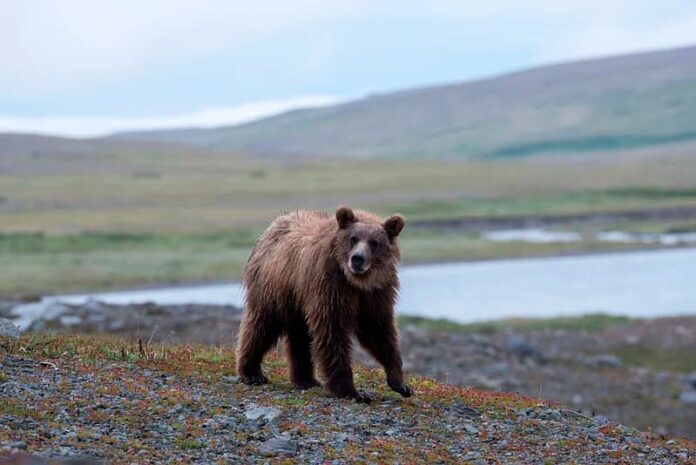In my previous piece about bear species, I realized that there are many American black bear subspecies. A majority of those subspecies are not well-known at all so it is nice to bring them up today. There are 16 American black bear subspecies in total; however, I will only talk about 15 of them. That is because there is no sufficient information available about the East Mexican black bears at all. Let’s have a look and see how many of them you know.
1California Black Bear
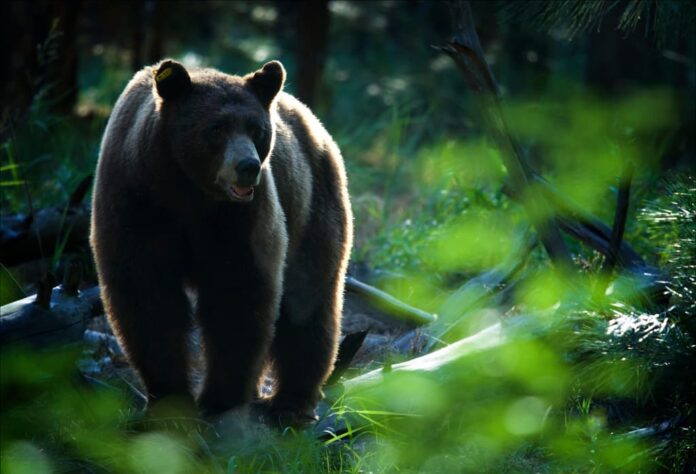
The California black bears are rather small as males are around 1.2 meters and females are about 1 meter tall at the shoulder. As the name suggests, they are from California where they inhabit forested areas with a wide variety of seral stages. At the same time, these bears also live in lake areas, mountainous areas, rivers, and scrub lands. They are fond of areas with fish and fat-rich insects that they love to feed on. Speaking of food, these omnivores’ main diet are from insects and plants. California black bears eat berries, buds, fish, flowers, grass, grubs, insects, honey, buts, and small mammals.
The California black bears are one of the bear species that are facing several threats that affect their population. Some of the main causes of their population decline are climate change, conflict with humans, habitat loss, and hunting. A demand for bear parts, particularly feet and gallbladders, for use in traditional Asian medicines is one of the reasons for hunting.
2Cinnamon Bear
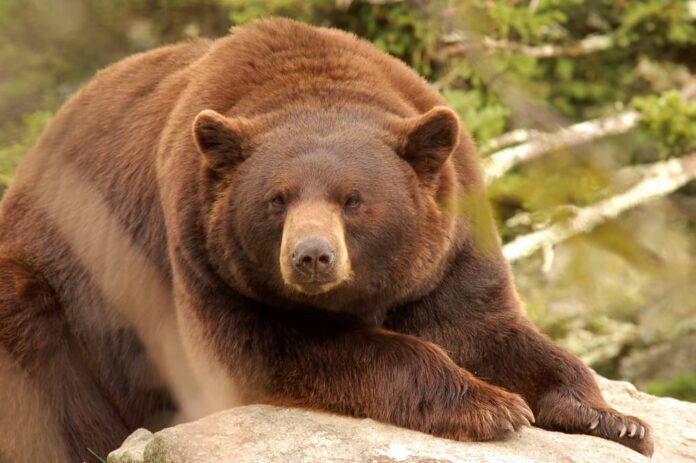
Cinnamon bear is one of the well-known American black bear subspecies that is native to Canada and the United States. These bears are 1.25 to 2 meters at the shoulder, and males are larger than females. While the name is cinnamon, this bear species has various color morphs that are frequently intermixed in the family. It is not uncommon to see a black mama bear with brown or red-brown cubs or vice versa. The cinnamon bears are omnivores so they feed on many things such as fruits, honey, insects, meat, nuts, and vegetation. On top of that, they are excellent climbers, good runners, and powerful swimmers so hunting is a piece of cake.
The habitats of these bears are forests in both lowlands and mountains, especially in drier and more arid regions. However, they are facing the same threat which is poaching for their gallbladders and paws. Apart from those, there are risks from collisions with road and rail transport. There are also some predators that take advantage of injured adults or sick cubs such as coyotes, mountain lions, and wolves.
3Dall Island Black Bear
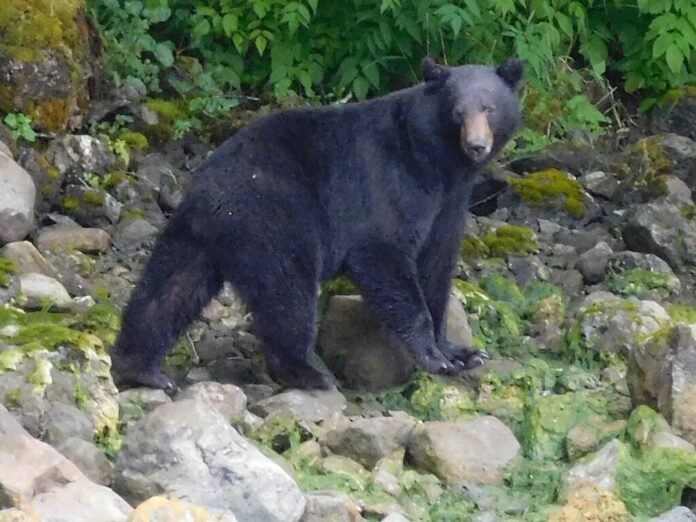
Just like the name suggests, this American black bear subspecies is found on Dall Island which is in Alaska. Where they live, they feed on an omnivorous diet such as berries, insects, pine nuts, small mammals, vegetation, and even carrion. They also take on fish from lakes and feed on salmon during the spawning run. Dall Island black bears are facing the threat of habitat loss due to limestone quarrying industries and logging.
4Eastern Black Bear
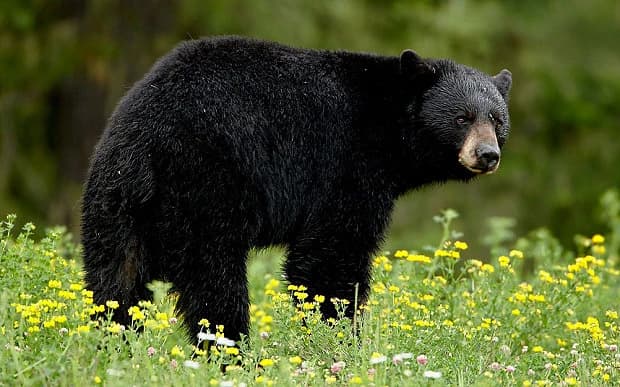
As for this American black bear subspecies, it stands up to tall meters tall and has black fur with a tan muzzle. Their range is distributed from Eastern Montana to the Atlantic coast and from Alaska through Canada to the Atlantic and Texas. These bears live in forested areas of mixed woodlands and swamps. In their habitats, they feed on insects and plants as well as forbs, grasses, and inner tree barks in spring. When summer comes, they feed on apples, blackberries, blueberries, cherries, cranberries, raspberries, and strawberries on top of honey, nuts, and roots.
Unfortunately, Eastern black bears are facing many threats both from humans and in the wild. Climate change leads to natural food shortage while road development increases traffic fatality rate and affect their natural movements. Not to mention poaching for their parts, their population is decreasing every year.
5Florida Black Bear
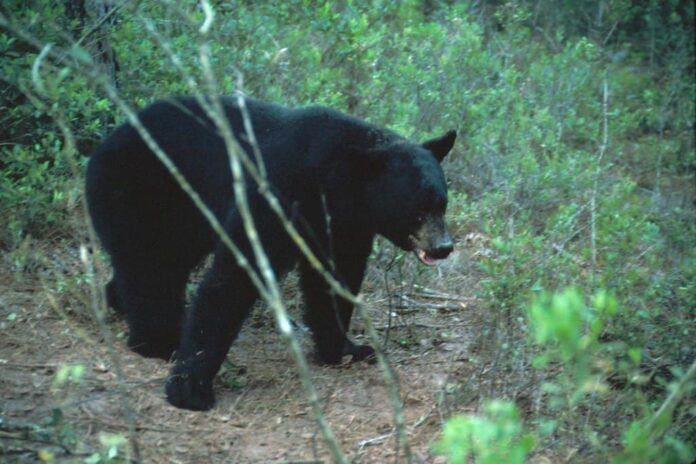
Florida black bears have large bodies that weigh around 140 kilograms on average, and the heaviest was 340 kilograms. This bear stands between 76 centimeters to 110 centimeters high at the shoulder, and it has shiny black fur. It walks with the entire sole touching the ground, and it has short, curved, and non-retractable claws on its feet.
Florida black bears are reclusive and shy, and they are mainly solitary except during the mating season. They live in forested habitats, and they are common in forested wetlands, oak scrubs, sand-pine scrubs, and upland hardwood forests. Not different from other black bears, this one is also an omnivore with a diet consisting of 80% plants, 15% insects, and 5% animal matter. Habitat fragmentation and habitat loss along with hunting have greatly impacted bears in Florida.
6Glacier Bear
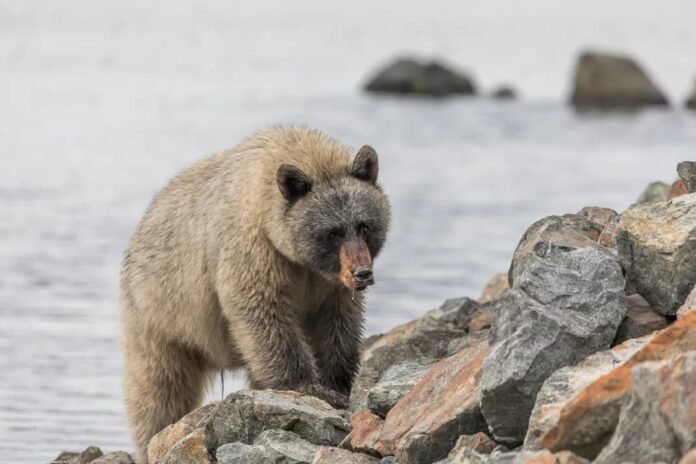
This is a very unique American black bear subspecies that goes by another name “blue bear”. Glacier bears are a rare gray color morph of American black bears that can be silvery blue-gray or charcoal-gray to black with silver tips. Glacier bears are fond of forests with thick understories and landscapes with abundant vegetation as well as urban populated areas. At the same time, they also move between forests, meadows, mountains, and streams in search of food and shelter. When it comes to food, their diet consists of young roots and shoots in early spring. As summer arrives, they feed on salmon spawning in the streams and consume starchy roots of ground cones in fall. Blue bears are now facing threats from gene swamping and over-harvesting, and their population is unclear.
7Haida Gwaii Black Bear
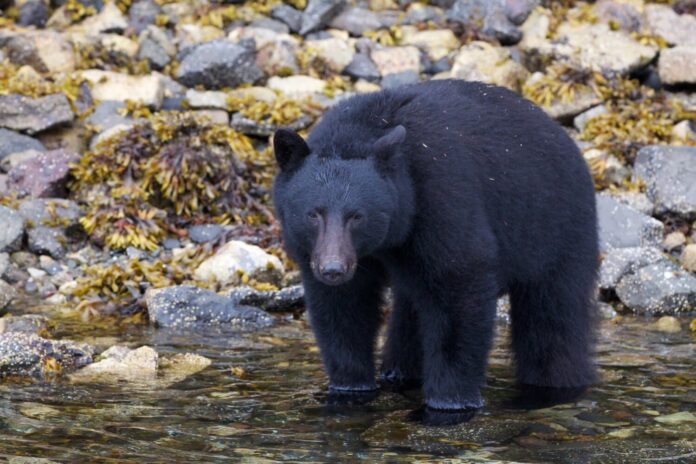
You are looking at the largest American black bear subspecies across North America. In fact, Haida Gwaii black bears are the largest land mammal native to the archipelago, standing 2.1 to 2.4 meters tall. In the archipelago, they inhabit estuaries, forests, meadows, shorelines, and streams. These bears have large skulls and molars that allow them to crack open the tough shells of shellfish. Where they live, they feed on barnacles, beach hoppers, clams, crabs, mussels, and sea urchins. In spring and early summer, they feed on green vegetation including beach lovage, cow parsnip, ferns, fireweed, horsetail, nettles, Pacific hemlock, rushes, and sedges. Hunting is the major cause of mortality of this black bear subspecies.
8Kenai Black Bear
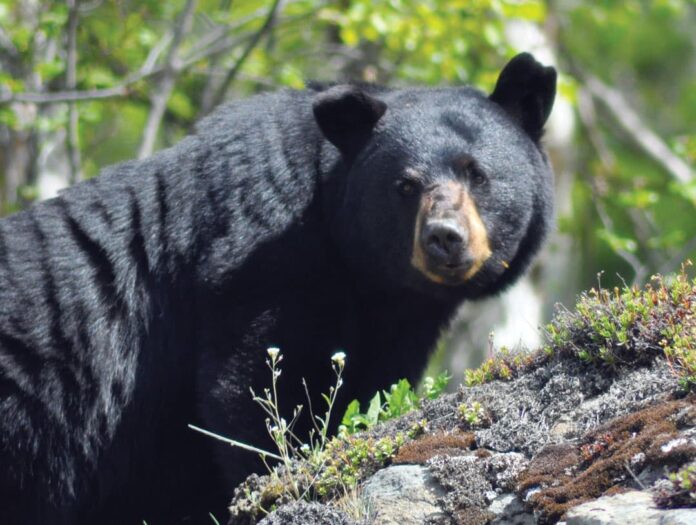
Kenai black bear is medium-sized, and they are found only on the Kenai Peninsula. Being omnivores, Kenai black bear’s diet comprises berries, nuts, and plants along with ants and other insects. But that is not all, they are also adept at preying upon newborn moose calves and consuming carrion as well. Hunting and habitat loss are the major threats to their number along with illegal trafficking and poaching. Now there are fewer than 600 Kenai black bears in the wild, making them a vulnerable species.
9Kermode Bear
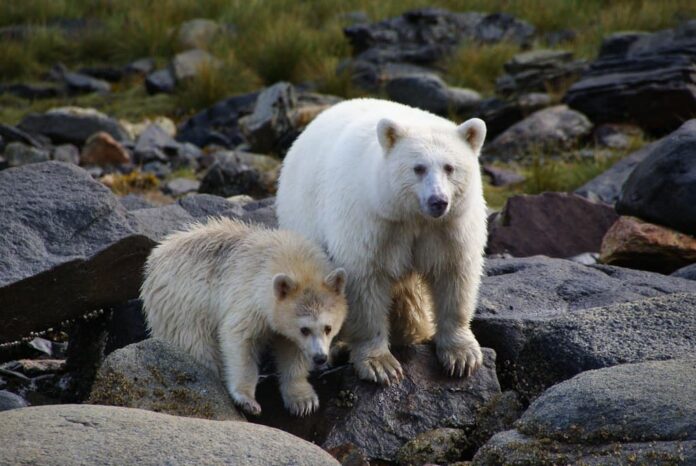
The Kermode bear aka the spirit bear is another American black bear subspecies you never heard of. You probably wonder about the coloration of this bear subspecies, and here’s why. Most of the Kermode bears are black but a white variant is also common among them; hence another name spirit bear. The thing is that the white variant is not albino but they are white because of a recessive gene. Both parents that carry this recessive gene will also produce a white cub.
These bears live in the Central and North Coast regions of British Columbia, and Southeast Alaska. Where they live, these omnivores feed on berries and herbage most of the year before the autumn salmon migrations. As solitary animals, they spend their lives wandering in search of food. However, mothers will take care of and travel with their young until they can fend for themselves. A spirit bear will feast until it can eat no more before going into hibernation for 5 to 7 months.
10Louisiana Black Bear
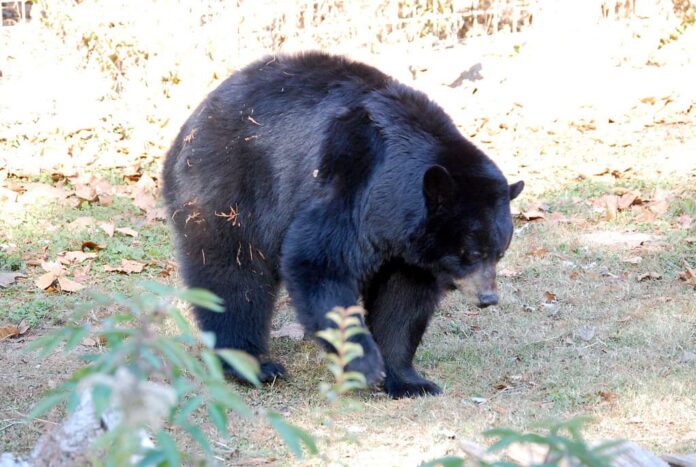
Looks very similar to the American black bears, Louisiana black bears have a longer, more narrow, and flatter skull. That is because they possess proportionately large molar teeth that help with hunting. At the same time, this bear subspecies is large and bulky with long coarse black hair and a short well-haired tail. Louisiana black bears do not only feed on fruits and grasses but also on ants, larvae, and small mammals. They will also take on carrion, and this is where their large molar teeth are useful.
Just like the name suggests, this American black bear species is from Louisiana but is also found in Arkansas, East Texas, and Mississippi. They mainly live in forested areas, particularly bottomland and other hardwood areas. In 1992, they were listed as Threatened under the U.S Endangered Species Act due to bear hunting and habitat loss. The good thing is their population is getting better and they are no longer on that list.
11Newfoundland Black Bear
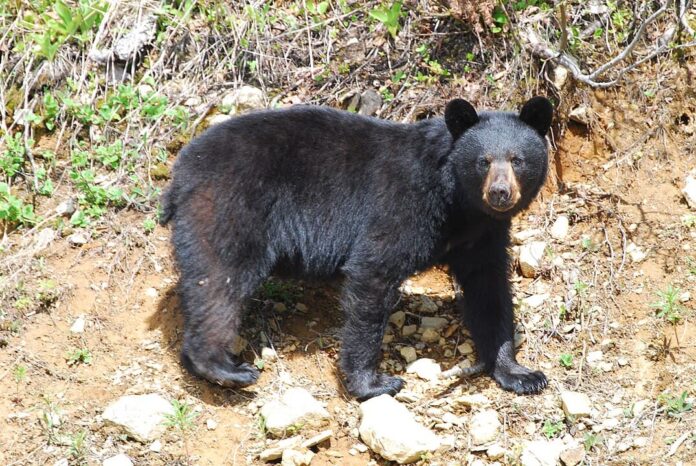
This American black bear is endemic to the island of Newfoundland in Atlantic Canada. They are larger than mainland black bears with males weighing between 90 and 136 kilograms or even up to 290 kilograms. These bears live in balsam fir forests and black spruce forests where food is rather different from other black bears. Newfoundland black bears feed on caribou and moose along with other grasses and plants.
12New Mexico Black Bear
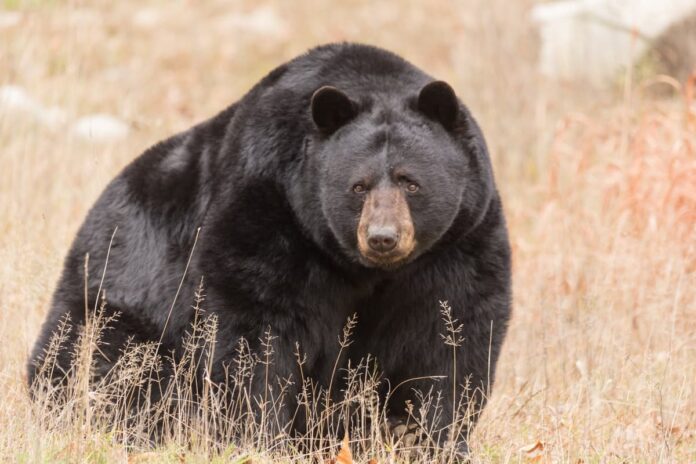
New Mexico black bears are medium-sized black bear subspecies that mainly live in forests and mountainous areas. Not different from other black bears in the family, this one is also an omnivore. In spring, they feed on carrion, flowering plants, grasses, insects, and roots. When summer approaches, they will expand their diet to berries, fruits, and honey. During autumn, their menu includes acorns, juniper berries, and pinon nuts. Along with that, New Mexico black bears also eat small rodents and even prey upon livestock. It is not uncommon for them to move to areas close to human settlements because of habitat loss.
13Olympic Black Bear
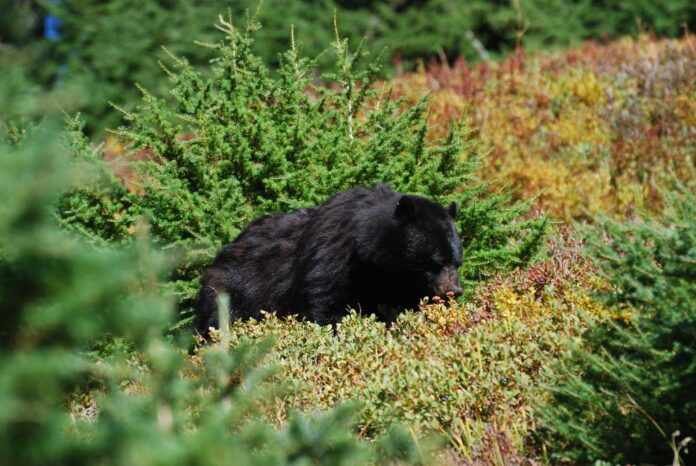
This black bear subspecies is a medium-sized black bear that can be found in the southern half of British Columbia. They also live in Northwestern California, Oregon, and Western Washington. The Olympic black bears inhabit forested areas and meadows that are usually close to water. These areas provide them with abundant food such as acorns, berries, grasses, herbaceous flowering plants, and nuts. When summer and autumn come, they feed on fish as well as insects and their larvae. While their population is doing well, they are still adversely affected by climate change, conflict with humans, habitat loss, and hunting.
14Vancouver Island Black Bear
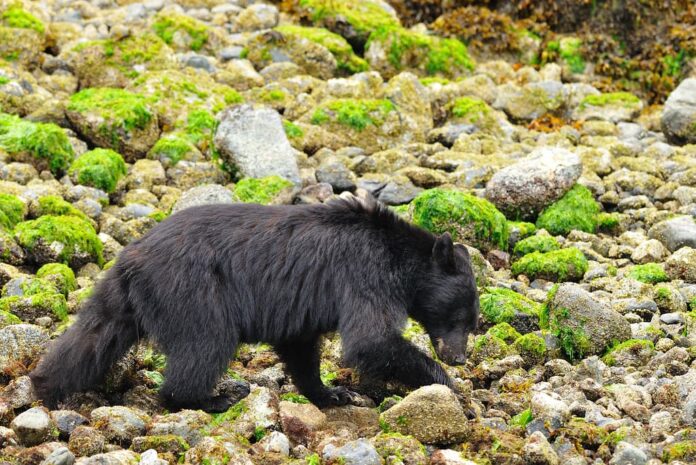
This is the only black bear subspecies in Vancouver, living in forested areas of the island and nearby islands. Vancouver Island black bears are slightly larger than mainland black bears, and they have a massive skull. As a coastal bear, it feeds on crabs, eels, and shellfish on top of insects, salmon, and small mammals. At the same time, the diet of the Vancouver Island black bears also includes berries, grasses, nuts, roots, and shoots. The main threat to this American black bear subspecies is hunting which causes their number to decrease each year.
15West Mexican Black Bear
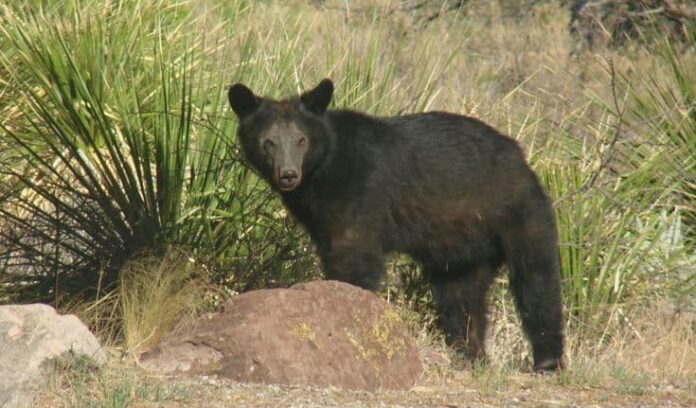
Here you are looking at the only American black bear subspecies that is classified as Endangered. This is also why general information about them is very little and there is no specific number of their population. The threats to these bears are habitat loss due to the increasing human population along with poaching. West Mexican black bears are found in north central Mexico, mainly in the Sierra Nevada Occidental range.
Related Post: 8 Bear Species In The World

